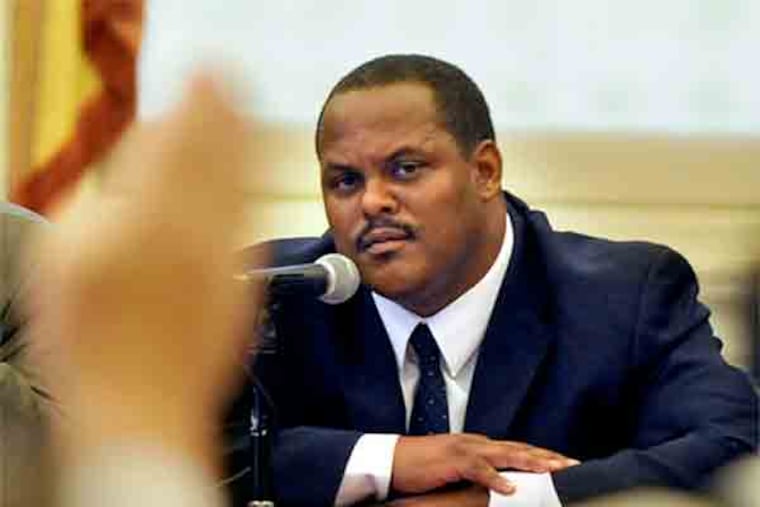Far from shipshape
Sounding a bit like Captain Queeg in The Caine Mutiny, Philadelphia Licenses and Inspections Commissioner Carlton Williams said in a recent statement that some of his employees "continuously attempt to undermine" his efforts to reform the beleaguered agency. He was responding to questions about whether the Department of Licenses and Inspections is expending more effort citing petty offenses than it is inspecting potentially deadly buildings.

Sounding a bit like Captain Queeg in The Caine Mutiny, Philadelphia Licenses and Inspections Commissioner Carlton Williams said in a recent statement that some of his employees "continuously attempt to undermine" his efforts to reform the beleaguered agency. He was responding to questions about whether the Department of Licenses and Inspections is expending more effort citing petty offenses than it is inspecting potentially deadly buildings.
The department is woefully behind in inspecting about 5,000 unsafe buildings, roughly 200 of which are considered to be in imminent danger of collapse, the most severe category. L&I is supposed to inspect the most dangerous buildings every 10 to 30 days, but too many of them haven't been seen by inspectors in years.
These buildings pose a threat to public safety that could soon grow. The freeze-thaw cycle of a rough winter sent all or parts of buildings in Kensington, Mantua, and Center City crashing down on a single day last month. More are expected to fall in the spring rains.
But L&I continues to stumble. Working through a backlog, it sent uncertified trainees to inspect about 200 buildings in February. It would be a shame if negligent property owners got out of well-deserved citations or demolition orders because inspectors lacked proper credentials.
Following a botched demolition job that led to a collapse and six deaths in 2013, City Hall has failed to provide enough of the funding the department needs for staff, equipment, and training. And even after the city imposed new demolition standards, the agency missed an unauthorized demolition spanning half a block in Fairmount.
L&I is further undercut by poor record-keeping and inadequate disclosure. Information about lagging inspections obtained by The Inquirer's Alfred Lubrano should be readily available, not supplied surreptitiously by employees afraid of retribution. Given L&I's history of corruption, transparency is the best way to assure the public that the agency is doing its job.
Some have accused L&I of spending too much time citing builders for small transgressions, like failing to post permits, instead of major threats to public safety. That's a false choice: Though dangerous buildings should be a priority, the agency has to do both well.
With morale in the subbasement, another problem could be that L&I's focus is not on either kind of violation, but rather on internal squabbles, much as Queeg was obsessed with finding the sailor who pilfered a quart of strawberries.
Licenses and Inspections is far too important to public safety and the city's economy for the commissioner to dismiss criticism as coming from disgruntled employees. A good leader considers criticism. If Williams can't do that, he should make room for someone who can.